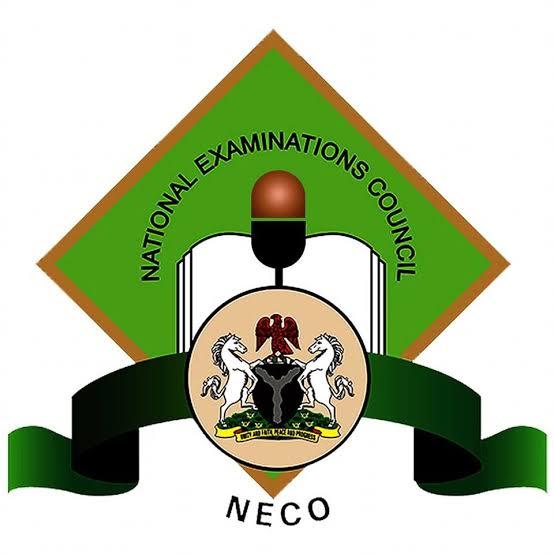Are you preparing for the NECO Economics exam for the 2025/2026 Senior Secondary Certificate Examination (SSCE)? Whether your goal is an A1 or simply passing confidently, mastering the official syllabus and applying effective strategies will help you succeed.
This guide contains the full NECO Economics syllabus, question format, focus topics, and expert success tips to help you score high.
NECO Economics Syllabus (2025/2026)
The NECO Economics syllabus covers basic economic concepts, theory of production, business organizations, national income, and international trade.
1. Basic Economic Concepts
| Topics |
What to Study |
| Meaning and Scope of Economics |
Scarcity, choice, scale of preference |
| Basic Economic Problems |
What, how, and for whom to produce |
| Types of Economic Systems |
Capitalism, socialism, mixed economy |
| Tools for Economic Analysis |
Graphs, tables, charts |
2. The Theory of Production
| Topics |
Focus Areas |
| Meaning and Types of Production |
Primary, secondary, tertiary production |
| Factors of Production |
Land, labour, capital, entrepreneurship |
| Division of Labour and Specialization |
Advantages and disadvantages |
| Scale of Production |
Internal and external economies of scale |
3. Demand and Supply
| Topics |
Key Concepts |
| Theory of Demand |
Law of demand, demand curve, factors affecting demand |
| Theory of Supply |
Law of supply, supply curve, factors affecting supply |
| Price Determination |
Equilibrium price, interaction of demand and supply |
| Elasticity |
Price elasticity, income elasticity |
4. Market Structures
| Topics |
What to Focus On |
| Types of Markets |
Perfect competition, monopoly, oligopoly, monopolistic competition |
| Features of Market Types |
Barriers to entry, pricing, competition |
| Price Control |
Maximum and minimum price regulations |
5. Money and Financial Institutions
| Topics |
Important Concepts |
| Money: Definition and Functions |
Characteristics of money |
| Financial Institutions |
Banks (CBN, commercial, merchant), insurance companies |
| The Stock Exchange |
Functions, instruments traded |
| Money Market vs Capital Market |
Differences and functions |
6. Business Organizations
| Topics |
What to Study |
| Sole Proprietorship |
Advantages and disadvantages |
| Partnerships |
Features, formation, merits and demerits |
| Joint-Stock Companies |
Private vs public limited companies |
| Cooperative Societies |
Types and importance |
| Public Corporations |
Roles and challenges |
7. National Income
| Topics |
Focus Areas |
| Concepts of National Income |
GDP, GNP, NNP, per capita income |
| Methods of Measuring National Income |
Output, income, expenditure approach |
| Uses and Limitations of National Income |
Importance and problems |
8. International Trade
| Topics |
What to Study |
| Meaning and Importance of Trade |
Home and foreign trade |
| Balance of Trade and Payments |
Surplus and deficit concepts |
| Exchange Rate |
Definition and effects |
| Import and Export Promotion |
Government policies, tariffs, trade restrictions |
9. Economic Development and Planning
| Topics |
Key Areas |
| Economic Growth vs Development |
Differences and measurement |
| Problems of Developing Countries |
Low productivity, poverty, unemployment |
| Economic Planning |
Objectives, types, importance |
10. Population and Labour Market
| Topics |
What to Focus On |
| Population Concepts |
Census, density, distribution |
| Labour Market |
Demand and supply of labour, wage determination |
| Unemployment and Solutions |
Types of unemployment, effects, remedies |
11. Public Finance and Taxation
| Topics |
What to Study |
| Government Revenue and Expenditure |
Sources and uses of public funds |
| Budgeting |
Types of budgets, surplus and deficit |
| Taxation |
Types of taxes, principles, importance |
12. Consumer Protection
| Topics |
Key Lessons |
| Consumer Rights and Responsibilities |
Government agencies involved (SON, NAFDAC) |
| Methods of Consumer Protection |
Legal and non-legal measures |
NECO Economics Exam Format
| Exam Paper |
Details |
| Paper I |
60 multiple-choice questions (1 hour) |
| Paper II |
Essay and structured questions (1 hr 30 mins) |
Top Success Tips for NECO Economics Exam
| Success Tip |
Why It’s Important |
| Master Demand and Supply Curves |
Core topic tested in theory and objective |
| Study Factors of Production and Market Structures |
Frequently examined concepts |
| Focus on National Income and International Trade |
Key essay questions topics |
| Solve Past NECO Economics Questions |
Recognize repeated questions |
| Revise Graphs and Diagrams |
Often required in theory answers |
| Memorize Definitions and Key Terms |
Important for objective questions |
| Attempt Mock Economics Exams |
Builds exam speed and confidence |
FAQs About NECO Economics Exam
1. How many papers are in NECO Economics?
Two papers: Paper I (Objective) and Paper II (Theory/Essay).
2. Which topics are most important?
Demand and supply, national income, market structures, money and banking, production.
3. Are diagrams and graphs important?
Yes. Questions often require drawing and interpreting economic diagrams.
4. Does NECO repeat Economics questions?
Yes. Past questions reveal repeated patterns.
5. What textbooks should I use?
-
Comprehensive Economics for Senior Secondary Schools
-
Essential Economics for SSCE
-
NECO Economics Past Questions & Answers
Conclusion
To succeed in NECO Economics (2025/2026), focus on understanding core economic principles, practicing past questions, and drawing accurate graphs. Master topics like demand and supply, market structures, and national income for a better chance of scoring A1 or B2.



